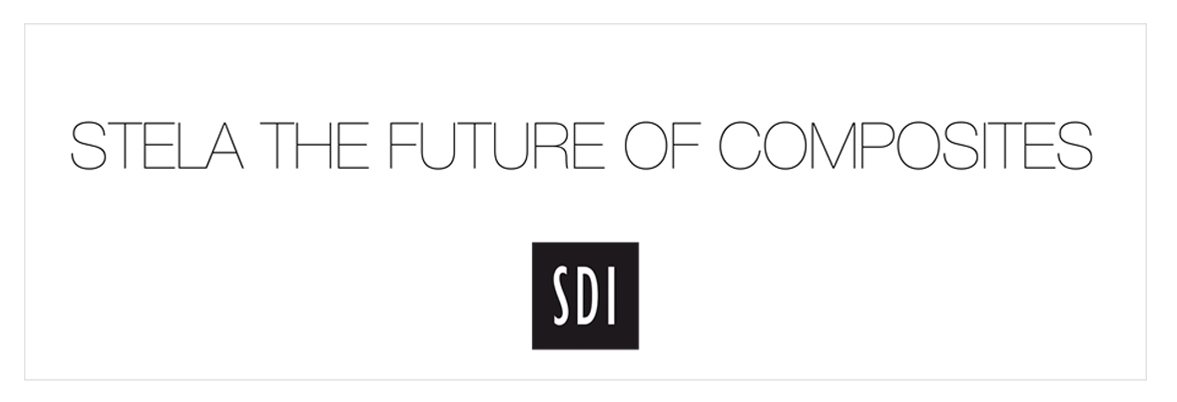
When selecting a restorative, clinicians are often forced to compromise. Compromise is necessary as no product excels in every attribute. Most dentists evaluate a restorative based on its handling, mechanical properties, radiopacity and sensitivity risk. Some composites are clearly stronger, while others embody effortless handling. However, searching for a restorative that excels in all properties is like seeking a winged unicorn. SDI is proud to announce the launch of Stela, an innovative new composite that strives to be the perfect high-performance self-cure composite without compromises.
The Stela breakthrough technology is the result of a partnership between SDI scientists and engineers from three leading Australian universities; the University of New South Wales, the University of Sydney, and the University of Wollongong. Stela is not just a composite - it is a complete end-to-end system that is formulated to deliver stronger and more efficient restorations.
Stela is available in both capsule and syringe systems, both to be used with Stela Primer. The universal shade offers a chameleon effect that balances translucency and opacity. This superior effect blends in with surrounding tooth structures to produce a flawless finish and aesthetic results. Stela is indicated for a wide range of clinical uses, including Class I, II, III and V restorations, base or liner, core buildups, and sealing endodontic access cavities.
Unlike many self-cure composites, Stela has been formulated without tertiary amine. This additive can contribute to long term shade darkening and the yellowing of restorations over time.1,2 With Stela, clinicians can rest assured knowing their restorations have improved long term colour stability.
Stela is applied in a simplified two-step process; primer, then composite. While traditional composite systems can take up to 120 seconds to prepare, Stela restorations are ready for placement in just 15 seconds. This is achieved by eliminating traditional, time-consuming steps of etch, prime, bond, and light cure. With the two-step Stela system, clinicians can benefit from reduced in-chair time, high patient satisfaction rates, and long-lasting restorations.
In addition, Stela features innovative technology that enables a gap-free interface. When light curing a composite, polymerisation begins in the area closest to the light source with the resulting polymerisation shrinkage pulling the restorative away from the cavity walls, creating micro gaps. 3,4,5 Stela does not require light curing, and Stela Primer contains a catalyst that initiates the curing process at the restoration interface. This polymerisation sequence mitigates stress to enable a gap-free interface, reducing post operative sensitivity and the risk of premature failure.
The Stela initiator system starts a snap set fast cure to convert monomers into polymer chains. Simultaneously, these chains become rapidly and densely cross-linked to each other, forming a complex network. This network reliably binds fillers. The results? Impressive mechanical properties.
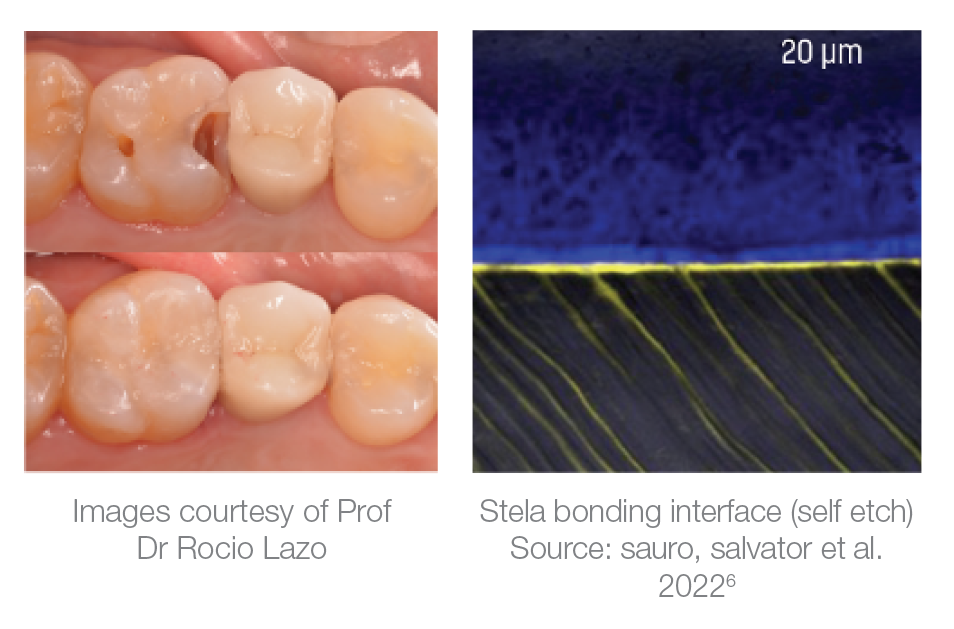
Stela boasts a high compressive strength that protects teeth against strong occlusal forces, and a high flexural strength that reduces the likelihood of failures due to major stresses. The strength of a restorative should always be judged on its combination of compressive and flexural properties, and Stela has the perfect balance of both, outperforming most other composite products.
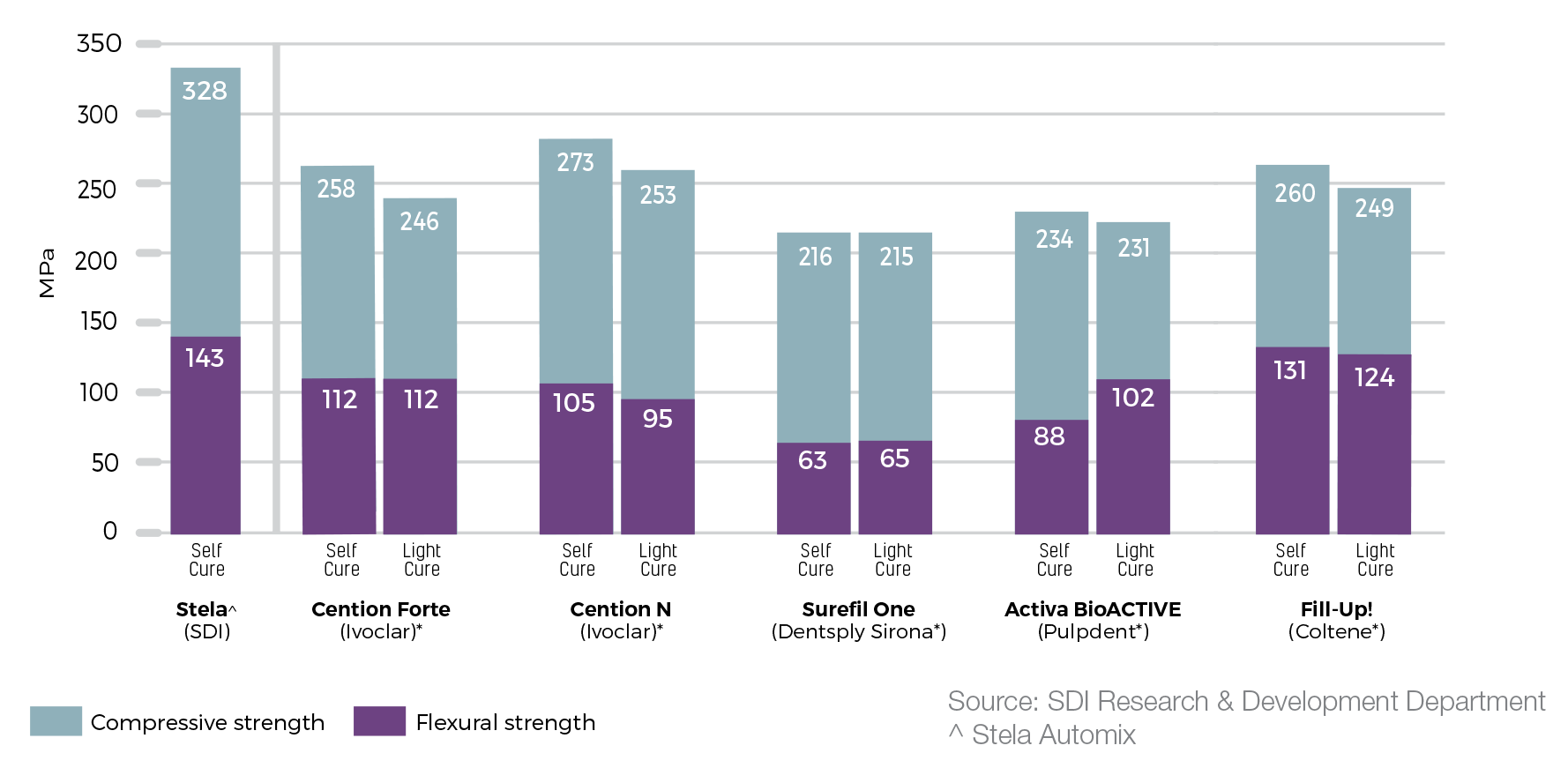
Stela users also benefit from outstanding radiopacity of 308% Aluminum. The formulation contains fluoride, calcium, and strontium, and is BPA and HEMA free for health-conscious clinicians and patients. What’s better, all of this is achieved without compromising bond strength, granted by a combination of the 10-MPD monomer in both Stela Primer and Stela composite, and low pull stress during polymerisation.
Stela is the ideal option for clinicians who are seeking a strong and reliable high-performance restorative, that is simple, fast and does not compromise aesthetics. Stela’s gap-free interface and simplified process reduces sensitivity and increases longevity, resulting in loyal patients and confident dentists. Stela is an Australian innovation, developed and manufactured in Australia and distributed to over 100 countries
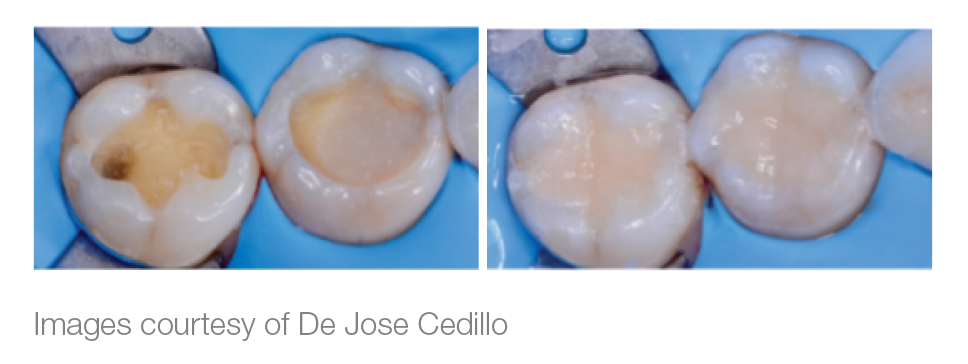
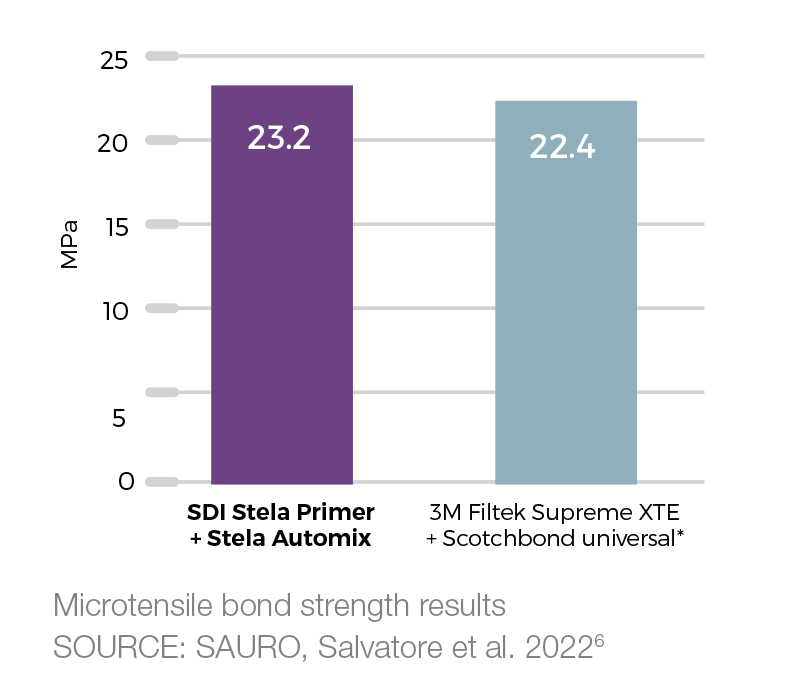
Article Published Feb - Mar 2024 Dental Solutions
REFERENCES
1. Andrea Kowalska et al. The Photoinitiators Used in Resin Based Dental Composite - A Review and Future Perspectives, 2021
2. Andrea Kowalska et al. Can TPO as Photoinitiator Replace “Golden Mean” Camphorquinone and Tertiary Amines in Dental Composites?, 2022
3. Hamdi Hosni Hamama. Recent advances in posterior resin composite restorations in Applications of Nanocomposite Materials in Dentistry, 2019.
4. S.R. Schricker. Composite resin polymerization and relevant parameters in Orthodontic Applications of Biomaterials, 2017.
5. Gary S. Berkowitz et al. Postoperative Hypersensitivity and Its Relationship to Preparation Variables in Class I Resin-Based Composite Restorations: Findings from the Practitioners Engaged in Applied Research and Learning (PEARL) Network. Part 1. Compend Contin Educ Dent. 2013 Mar; 34(3): e44– e52.
6. Salvatore Sauro et al.Microtensile bond strength and interfacial adaptation of two bulk-fill composites compared to a conventional composite restorative system, 2022.